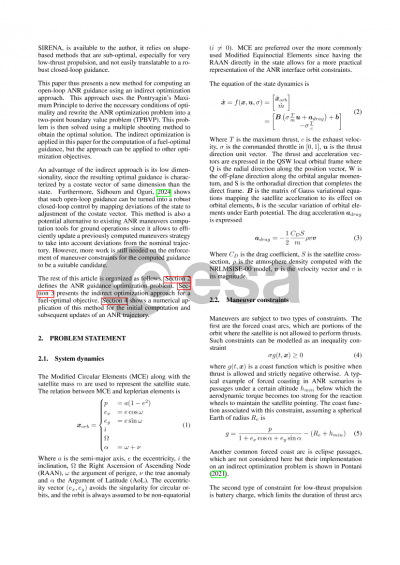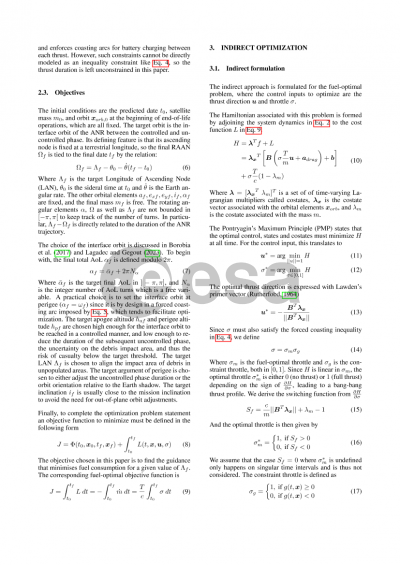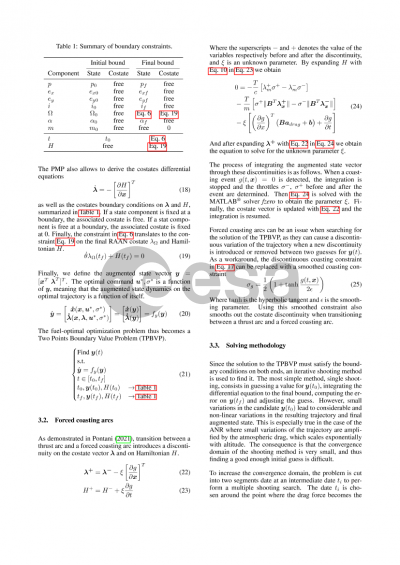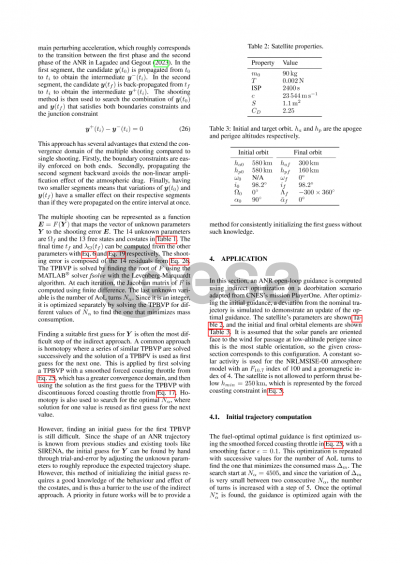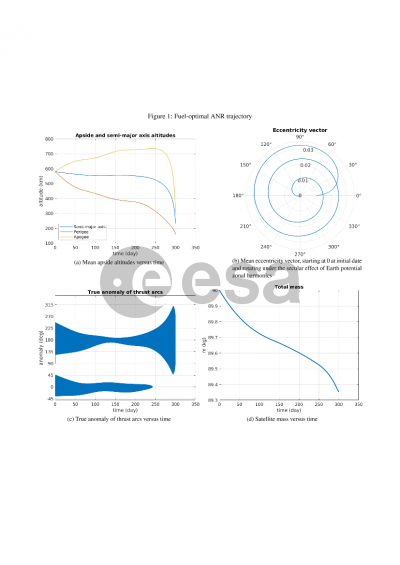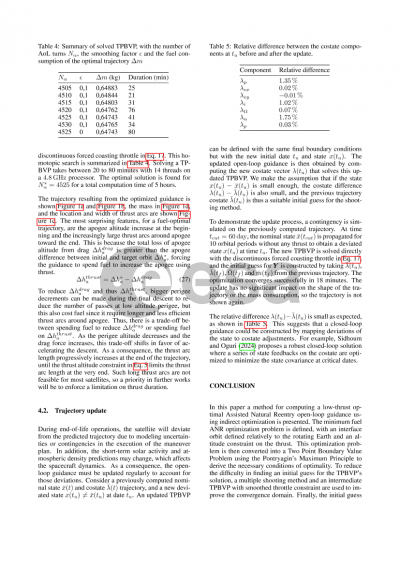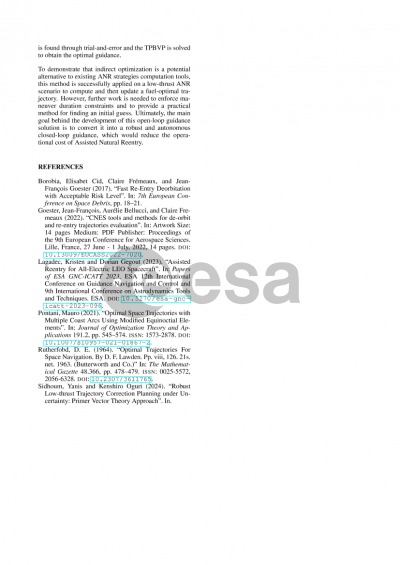Document details

Abstract
Satellites in low Earth orbit must be deorbited after their mission lifetime to limit proliferation of space debris. Controlled reentry is a common deorbiting strategy, where the satellite is deorbited with a relatively large velocity decrement. This allows to keep the human casualty risk under the regulatory threshold by precisely controlling the impact area. However, the propulsion system must be dimensioned accordingly and it is, therefore, unfeasible for low thrust propulsion systems. A common alternative is natural reentry, where the orbit is left to decay under the sole effect of atmospheric drag. Nevertheless, due to uncertainties in atmospheric density, the impact point cannot be predicted, which implies that the spacecraft must be designed such that it satisfies casualty risks assuming a random impact point.
Assisted Natural Reentry (ANR) is an intermediate strategy where the satellite is progressively brought in a controlled manner to a very low elliptical orbit using both drag and propulsion. From this last controlled orbit, it then naturally reenters the atmosphere within a few revolutions, which limits the possible ground impact area and thus allows to reduce the casualty risk by carefully selecting the target orbit. ANR is feasible with low thrust propulsion, and it is suited for missions that do not meet the casualty risk constraint with a natural reentry but cannot perform a controlled reentry either. The computation of an ANR strategy poses several challenges. To begin with, the target orbit is defined relative to the Earth surface, so the trajectory must be phased with the Earth rotation. Then, the atmospheric drag heavily constrains the shape of the final controlled orbit, as the drag force becomes predominant over the spacecraft thrust capability. The increasing aerodynamic torque also means that the spacecraft cannot perform thrusts below a certain altitude, usually around 250km, depending on its attitude control capability.
This paper presents the first results in an ongoing project on autonomous low-thrust ANR, supported by CNES and Thales Alenia Space. An indirect optimization method using primer vector is proposed to compute an open-loop minimum fuel ANR trajectory. Coasting arcs are implemented for low-altitude and eclipse segments. This method is meant to be the first step toward a robust closed-loop controller. A second method to design ANR trajectories, developed for CNES’s tool SIRENA, based on a direct shape-based approach is also presented. For this second method, the trajectory is divided into two phases at a critical perigee altitude, which turns the problem into a three-point boundary value problem between the initial, intermediate and target orbits. The ANR design problem is then solved by assuming a piecewise linear semi-major axis profile for the first phase, and a linear perigee altitude profile for the second phase. While the computed strategy for the second method is only sub-optimal, the method is fast, robust and does not need an initial guess. Both methods are analysed and compared, and a sensitivity analysis of the open-loop strategy to uncertainties is performed.
Preview

